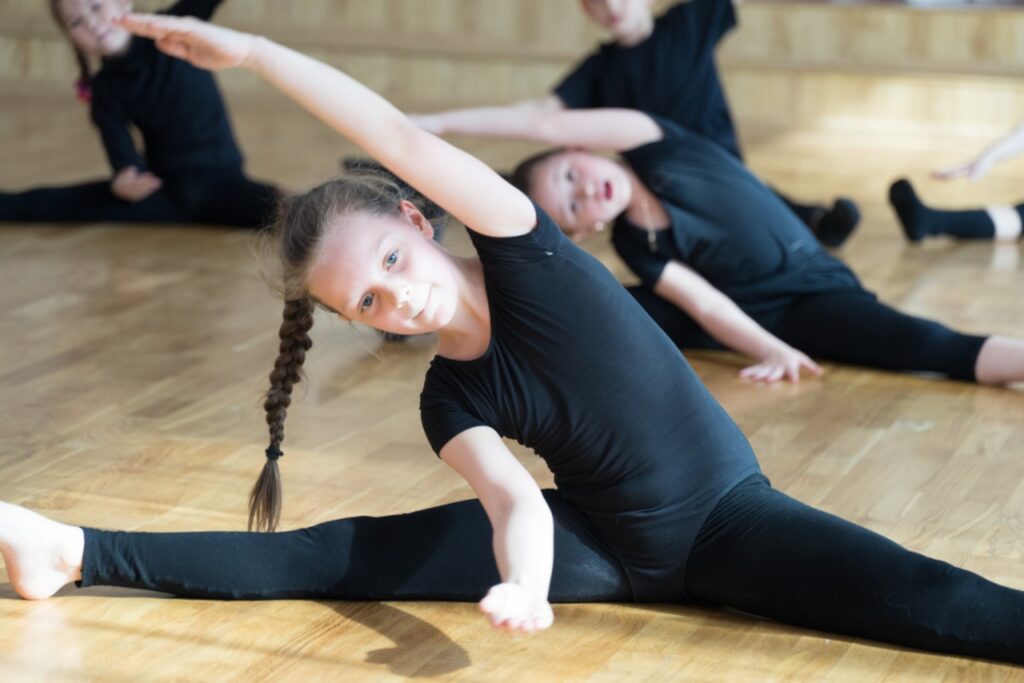Dance is a physically demanding activity that requires strength, flexibility, balance, and stamina. While regular dance classes help develop these skills, young dancers can benefit even more by adding other forms of exercise to their routine. This approach, known as cross-training, involves practising activities outside of dance to improve overall performance and reduce the risk of injury.
Cross-training allows dancers to work on muscles and skills that may not be fully targeted in regular dance lessons. It can also make training more enjoyable by introducing variety and keeping workouts fresh and exciting.
Building Strength for Better Performance
Many dance styles rely on strong muscles to support controlled movements, powerful jumps, and good posture. While dance itself helps develop strength, some muscle groups may not be used as much as others during classes. Cross-training activities like swimming, Pilates, and bodyweight exercises can strengthen these areas.
For example, swimming works the upper body and core muscles, which support balance and stability. Pilates focuses on building deep core strength, helping dancers hold their positions more easily. This extra strength not only improves performance but also reduces the risk of overuse injuries.
Improving Flexibility and Range of Motion
Flexibility is essential for dancers, as it allows them to move gracefully and perform more challenging steps. While stretching is part of most dance classes, other activities like yoga can take flexibility training further.
Yoga combines gentle stretching with controlled breathing, which helps relax muscles and improve joint mobility. Practicing yoga alongside dance can make it easier for young dancers to achieve higher leg extensions, deeper lunges, and smoother transitions between movements.
Increasing Stamina and Endurance
Performances and rehearsals can be physically exhausting, especially when dancers are on stage for long periods. Cross-training with cardio-focused activities like swimming, cycling, or running can improve cardiovascular health and increase stamina.
With better endurance, young dancers can maintain their energy levels during long rehearsals and still perform with precision and expression right to the final moment. This also means they recover faster between routines or during multi-day competitions.
Enhancing Balance and Coordination
Balance and coordination are crucial for movements such as turns, jumps, and lifts. While dance develops these skills, certain sports and activities can provide additional benefits. For example, gymnastics builds strong core stability and body control, while ice skating improves both balance and coordination under different conditions.
By challenging their bodies in new ways, young dancers can return to the studio with improved control, helping them execute more complex movements with confidence.
Reducing the Risk of Injury
One of the main benefits of cross-training is injury prevention. Repeating the same movements in dance can put stress on specific muscles and joints. Cross-training works different muscle groups, giving overused areas a chance to rest while still building overall strength.
Strengthening supporting muscles can help protect joints and reduce the chance of strains or sprains. For example, maintaining the hips and glutes through resistance exercises can help prevent knee injuries, which are common in dancers.
Supporting Mental Well-being
Cross-training is not only good for the body but also the mind. Dance training can sometimes feel repetitive, especially during intense rehearsal periods. Trying new activities can keep things exciting and give young dancers a mental break while still staying active.
Activities like swimming or outdoor cycling can be refreshing because they take place in a different environment from the studio. This variety can boost motivation and make returning to dance class feel even more enjoyable.
Encouraging Lifelong Healthy Habits
Introducing cross-training at a young age helps children understand the importance of a balanced fitness routine. They learn that staying active in different ways supports their main passion and keeps their body healthy. This knowledge can help them maintain strong fitness habits well into adulthood.
How to Add Cross-Training to a Dancer’s Routine
For cross-training to be effective, it should be balanced with regular dance classes. Too much extra activity can cause fatigue or reduce dance practice time. Cross-training sessions should complement dance training, not replace it.
Parents and teachers can help by selecting activities that target specific areas for improvement. For example, if a dancer needs more strength, Pilates or resistance training may be helpful. If flexibility is the goal, yoga or stretching-focused classes could be ideal. If endurance is a concern, swimming or cycling can be added a few times a week.
Rest days are just as important as training days. The body needs time to recover and repair itself to stay strong and injury-free.
Conclusion
Cross-training is a valuable way for young dancers to improve their strength, flexibility, stamina, and overall performance. It helps prevent injuries, keeps training interesting, and supports both physical and mental well-being. By combining regular dance practice with other forms of exercise, dancers can enjoy a well-rounded approach to fitness that supports their growth and passion for dance.
Kew School of Dance encourages healthy training habits that support the whole dancer. Our programs focus on building strong foundations while helping students develop the skills they need to perform at their best. To learn more about our classes and how we support your child’s dance journey, contact us at 03 9123 8458 or 0410 311 008.








